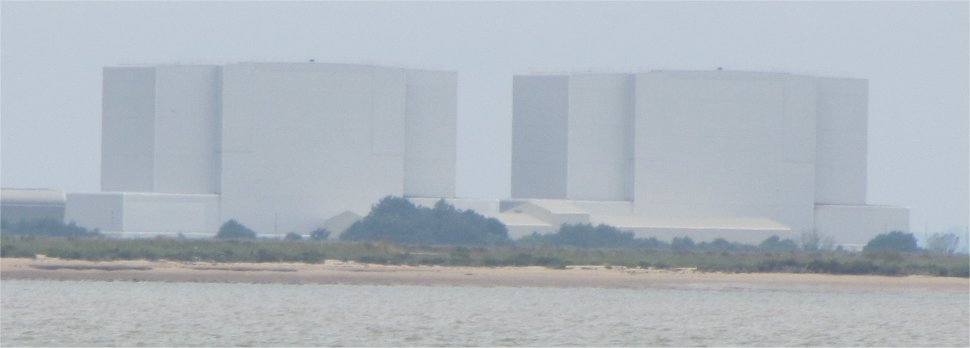 Bradwell A Nuclear Power Station |
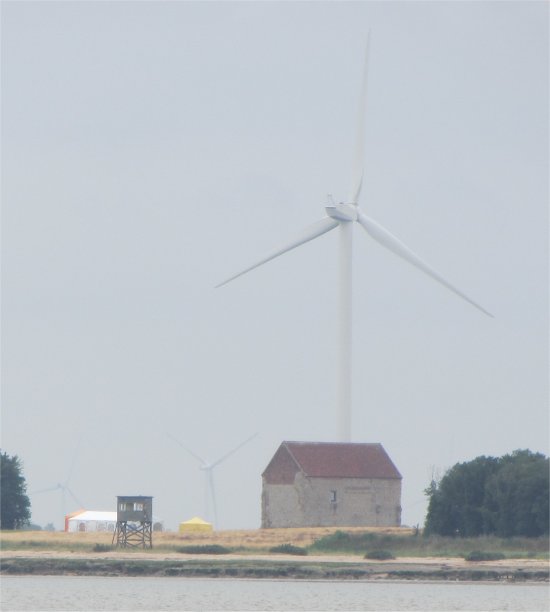 St Peter-on-the-Wall |
We headed for the narrow channel between the Gunfleet Sand and Buxey Sand, marked by the Wallet Spitway and Swin Spitway buoys. Due to the strong tidal currents we had to crab across the channel, the two buoys clanging out a melancholy bell as if for a funeral march.
Having negotiated the narrow channel, we then had to detour around the Swallow Tail sand bank before picking up the Inner Whitaker Buoy, and then following the strings of buoys up into the River Crouch entrance.
To the left a smooth, muddy flat betrayed the outer edge of Foulness Sand, part of Shoeburyness Outer Firing Danger Area. Numerous seals lay on the mud flats on either side of us.
I inadvertently gave Rex a little scare as he awoke from his slumbers. I was nowhere to be seen; I was tightening the spinnaker halyard. Near the entrance to the River Roach, we passed a yacht whose crew were practising Man Overboard Drill; always a useful drill to practice no matter what vessel is being used, and has the potential for life saving benefits. Should mariners be forced to undergo such drills each year? Now, there's a thought.
As we drifted past the sleepy town, its history with its old-world charm with listed buildings, boat-building yards and sailing clubs oozed out over the river towards us. This quiet, unspoilt riverside town is known as the 'Cowes of the East Coast'. According to the Domesday Book of 1086, Burnham was held in 1066 by a thane called Alward and 10 free men. After 1066 it was acquired by a Norman called Tedric Pointel of Coggeshall whose overlord was Ralph Baynard. Historically, it has benefited from its location on the coast - first as a ferry port, later as a fishing port known for its oyster beds, and most recently as a centre for yachting.
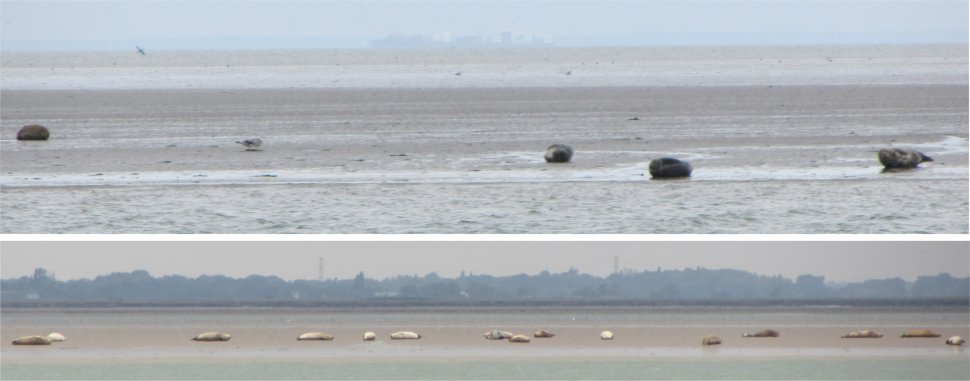 Seals on the Mud Flats |
During the Second World War, Burnham was the training base for one of the first Commando battalions, led by Lt-Col Dunford-Slater. From 1943 to 1945 it was HMS St Mathew, base for up to 1400 sailors training on minor landing craft. The navy occupied the Royal Corinthian Yacht Club and a site at Creeksea. Unconnected with these activities, the area often witnessed Luftwaffe crashes and bomb, mine and V-weapon explosions - German parachute mines caused fatalities in the town and at nearby Southminster.
Incidentally, the Essex town is mentioned in the song "Billericay Dickie", by Ian Dury. This song alludes to Burnham's somewhat upmarket status in the county, with the invitation "Oh golly, oh gosh, Come and lie on the couch, With a nice bit of posh, From Burnham-on-Crouch."
We soaked up this history, idly watching a ship slowly heading down the river and out to sea. Edging into the marina, a voice boomed out, "What took you so long?" Its source was the elderly chap we had chatted to at Shotley; small world.
Then, as we entered our berth, Paul, a fellow sailor from Tollesbury, came across on the pontoon to greet us and take our lines. He was moored a few berths further along. A chinwag ensued, and he informed us he had found a good place to eat in the evening. He invited us to join him and Deborah on his boat at 6pm for drinks. What a splendid chap.
Two chaps turned up to put a new genoa on a yacht a couple of berths up. They seemed to be making a meal of it, but managed to get it sorted just before a young fellow and his girlfriend turned up. The couple were welcomed aboard, and I gathered the four would be participating in the races to be held in the evening.
"We were expecting Tim and Jenny to be joining us tonight," said one of the men, "but since we ran aground last week, they didn't want to join us." Hmmm…..
We joined Paul and Deborah for a beer and nibbles on Paul's boat, and then all four of us walked to the Royal Corinthian Yacht Club. The club was founded at Erith, Kent in 1872 and moved to Burnham-on-Crouch in 1892. In 1931 Tony Mitchell became Commodore of the club where he was responsible for completing the new clubhouse at Burnham-on-Crouch. The Grade II listed building was designed by Joseph Emberton and represented Britain's contribution to the International Exhibition of Modern Architecture held at the Museum of Modern Art in New York City in 1932. The building is one of the few examples of the International style of architecture in Britain.
The Club provided the crew for the Endeavour in Thomas Sopwith's America's Cup Challenge in 1934 after a strike of Sopwith's professional crew. Five members of the club crewed the boat Lalage in the 1936 Summer Olympic Games, winning the gold medal in the 6-metre class.
But enough about the club. There, we enjoyed a superb meal out on the balcony, watching the racing yachts shoot past with their spinnakers straining. The food was excellent, and the wine, kindly purchased by Rex, went down rather well. Indeed, Rex was so elated with the wine that he left his wallet on the bar. I have my work cut out being his carer.
It was good to meet up with Paul again. I hadn't seen him since we met up in Willemstad a year ago. A lot of water had flowed under the bridge since then. He and Deborah seemed to be well matched. Deborah was a delightful lady, and also hard working, actually working from the boat during this week's sail together; a happy compromise, I guess.
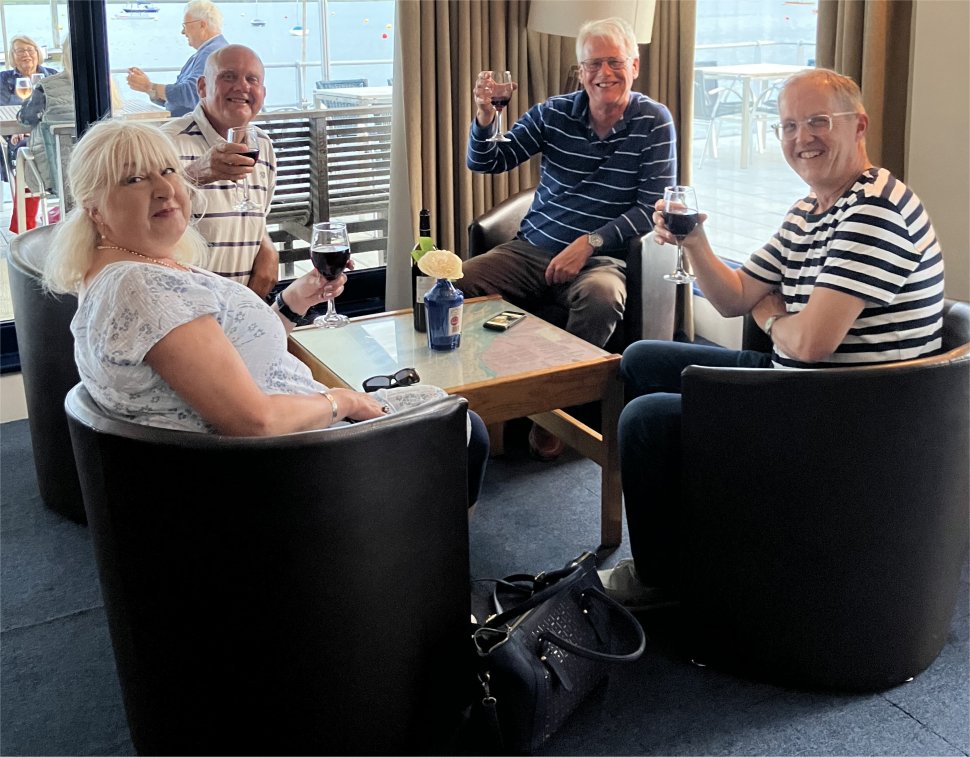 Cheers from the Royal Corinthian Yacht Club |
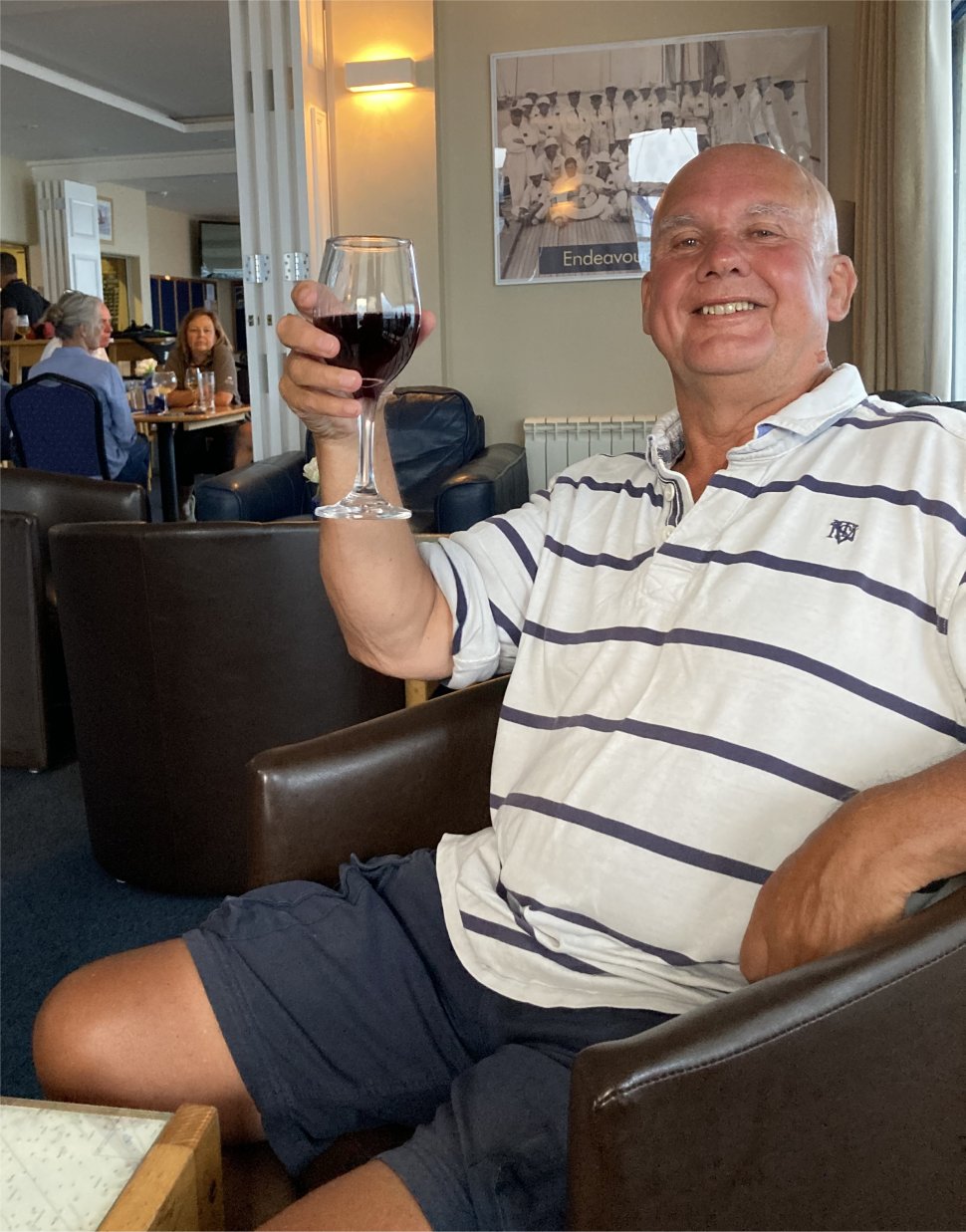 And It's Cheers from Me |
